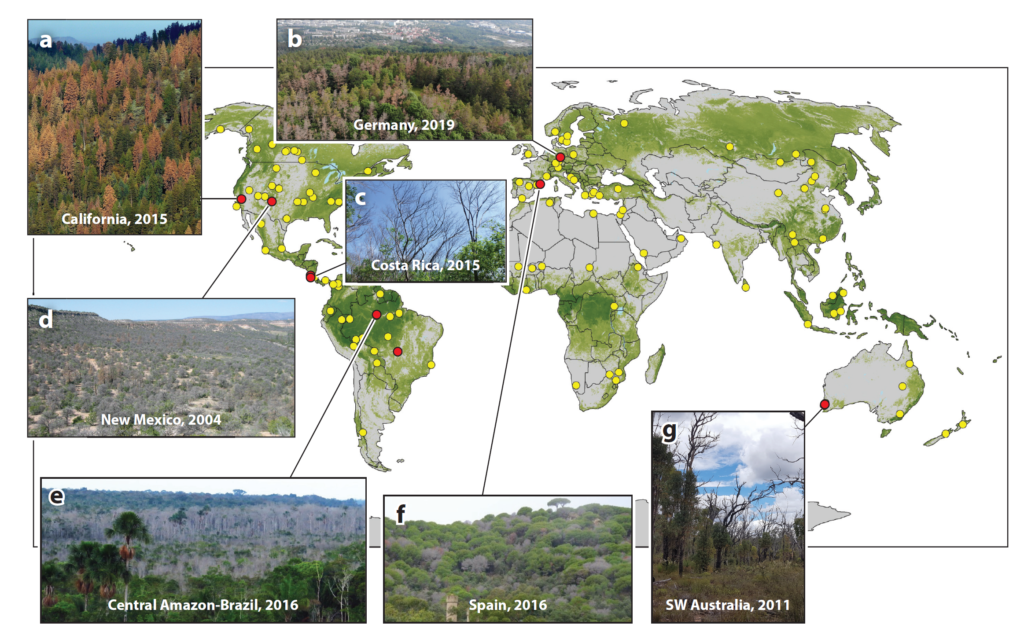Surprising events of widespread tree mortality cause concern for future tree loss
The Science
Forest loss through tree mortality events appears to be occurring more frequently in response to rising temperature and more frequent and severe droughts. However, most of these events were unexpected by global and regional experts. This study reviewed the literature to identify such unexpected events. The authors used these examples to highlight the unpredictable nature of mortality events. They subsequently discussed solutions to this challenge, including the use of remote sensing as an early warning system, and improved modeling to better predict such events.
The Impact
Recent observations of elevated tree mortality following climate extremes, like heat and drought, raise concerns about climate change risks to global forest health. We currently lack both sufficient data and understanding to identify whether these observations represent a global trend toward increasing tree mortality. The impact of this paper comes in the form of a global warning of increasing mortality events that are currently unpredictable. Further, this paper identifies a path forward for improved detection and prediction of such mortality events. Ultimately, this paper will lead to improved motivation and awareness of the growing issue of forest loss globally.
Summary
Here we document events of sudden and unexpected elevated tree mortality following heat and drought events in ecosystems that previously were considered tolerant or not at risk of exposure. These events underscore the fact that climate change may affect forests with unexpected force in the future. We use the events as examples to highlight current difficulties and challenges for realistically predicting such tree mortality events and the uncertainties about future forest condition. Advances in remote sensing technology and greater availably of high-resolution data, from both field assessments and from satellites, are needed to improve both understanding and prediction of forest responses to future climate change.

Contact: Nate McDowell, Pacific Northwest National Laboratory, nate.mcdowell@pnnl.gov
Funding
Mireia Banqué, Víctor Granda, Francisco Lloret and Jordi Vayreda provided useful suggestions for an earlier version of Section 3.T.A.M.P. and A.E.-M. acknowledge funding from the European Research Council (ERC) under the European Union’s Horizon 2020 research and innovation program (grant 758873,TreeMort).N.G.M. acknowledges support from the Department of Energy’s Next-Generation Ecosystem Experiments (NGEE)-Tropics and Coastal Observations, Mechanisms, and Predictions Across Systems and Scales (COMPASS) projects, and A.J.D. acknowledges support from the United States Geological Survey (USGS) Ecosystems Mission Area (EMA). Any use of trade, firm, or product names is for descriptive purposes only and does not imply endorsement by the US Government. This study draws on and contributes to the International Tree Mortality Network, an initiative of the International Union of Forest Research Organizations (IUFRO) Task Force on monitoring global tree mortality trends and patterns.
Publications
Hartmann H, Bastos A, Das AJ, Esquivel Muelbert A, Hammond WH, Martinez-Vilalta J, McDowell NG, Powers J, Pugh TAM, Ruthrof K, Allen CD. 2022. Climate change risks to global forest health – emergence of unexpected events of elevated tree mortality world-wide. Annual Reviews of Ecology and Environment. doi.org/10.1146/annurev-arplant-102820-012804